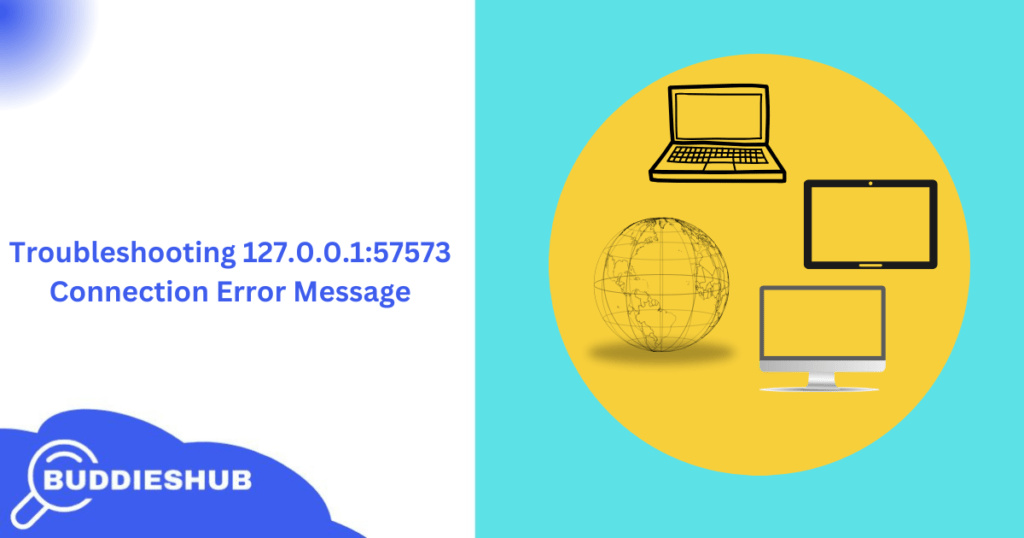Introduction
When you see the 127.0.0.1:57573 connection error, your computer is having trouble communicating with itself through a specific “door” (port 57573). Here’s a straightforward guide to understanding and fixing it.
Connection errors are the digital equivalent of a locked door. You’re not alone if you’ve stumbled upon the dreaded 127.0.0.1:57573 connection error. This guide will walk you through what it means and how to fix it step by step.
What is 127.0.0.1?
Often called the “loopback address,” 127.0.0.1 is like your computer talking to itself. It’s mainly used for testing purposes and internal communications. Think of it as a self-reflection tool for your device.
Understanding Port Numbers
Ports are like doors that let programs communicate. Port 57573 is one such door, often used by specific applications for internal networking.
Why is 127.0.0.1:57573 Relevant?
This combination indicates a program trying to establish a connection with your system locally. Errors occur when something blocks or mismanages this connection.
Common Causes of the Connection Error
Misconfigured Network Settings
If your network settings are out of whack, the connection won’t flow. Issues like incorrect IP bindings or DNS misconfigurations can wreak havoc.
Firewall and Antivirus Blockages
Security software sometimes becomes overzealous, blocking connections it deems suspicious—even when they’re perfectly safe.
Software Bugs or Glitches
No software is perfect. A bug in the program using port 57573 could be behind the issue. Developers usually fix these bugs in updates.
Step-by-Step Troubleshooting Guide
Step 1: Check the Software Using the Port
Start by identifying which program uses port 57573. Check its settings and ensure it’s running properly.
Step 2: Verify Network Configuration
Checking the Loopback Address
Ensure your system recognizes 127.0.0.1 correctly. Incorrect DNS settings can misdirect traffic.
Ensuring Proper Port Binding
Make sure the program is correctly linked to port 57573. Misconfigured bindings can block communication.
Step 3: Disable Firewalls Temporarily
Sometimes, firewalls block legitimate connections. Disabling them briefly can confirm if this is the root cause.
How to Disable Firewalls in Windows
Go to Settings > Update & Security > Windows Security > Firewall & Network Protection. Turn off the firewall for the active network.
Disabling Firewalls on macOS and Linux
For macOS, navigate to System Preferences > Security & Privacy > Firewall. On Linux, use terminal commands like ufw disable.
Step 4: Examine Application Logs
Logs often hold the answers. Check the logs of the application using the port for error details.
Step 5: Restart the Application or System
A simple restart can sometimes resolve temporary glitches. It’s the age-old “turn it off and on again” trick!
Advanced Troubleshooting Techniques
Using Telnet to Test Port Accessibility
Use Telnet to see if port 57573 is open and accessible. Run telnet 127.0.0.1 57573 in your terminal or command prompt.
Running Diagnostic Commands
Netstat Command
Use netstat -an to list active connections and see if port 57573 is listening.
Ping and Traceroute Commands
Ping 127.0.0.1 to ensure the loopback address works. Use traceroute for deeper network analysis.
Preventive Measures for Future Errors
Keeping Software Updated
Always update your software. Developers patch bugs and improve performance with updates.
Regularly Reviewing Network Configurations
Routine checks of network settings can prevent future headaches. Think of it as spring cleaning for your network.
Conclusion
Connection issues can be frustrating, but with the right approach, you can fix them and even prevent them in the future. By following this guide, you’ll turn that error message into a success story.
FAQs
What does 127.0.0.1:57573 mean?
It refers to your computer attempting a local connection via port 57573. It’s like talking to yourself through a specific channel.
Can a firewall cause this error?
Yes, firewalls often block ports they find suspicious. Disabling or configuring them correctly can solve the issue.
How do I check if the port is open?
Use tools like Telnet or the netstat command to verify port accessibility.
Why does this error keep happening?
Persistent errors may indicate deeper issues, like software bugs or outdated network settings.
Is it safe to disable the firewall temporarily?
It’s generally safe for troubleshooting, but ensure it’s re-enabled to maintain security.



